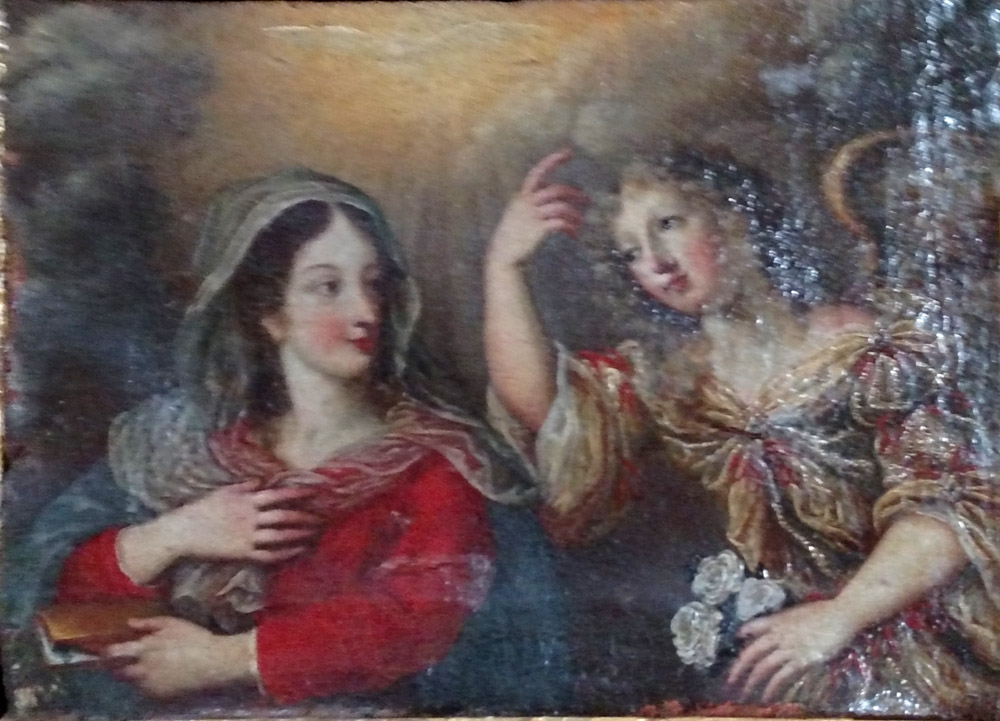The Annunciation

Church of San Francisco di Paola, Venice
The artist compresses the traditional iconography into a tight space and a brief moment of time. The angel's wing and garments are not fully in the frame, suggesting movement into the scene from the right. His hand holds the flowers usually pictured in a vase on the floor or a table. Mary is captured just at the moment of awareness of the angel; she has turned her head around but not yet her body, and she is keeping her place in the book with her forefinger. She holds her right hand to her breast, a reference to her "troubled" reaction to the angel's greeting (Luke 1:29). We see only the upper half of her body, apparently kneeling at a
prie-dieu,
a piece of furniture for use during prayer, consisting of a kneeling surface and a narrow upright front with a rest for the elbows or for books
which we see hardly at all. The dove, usually seen traversing the space between Mary and the Father, is instead spread out just above the figures.
This sense of a captured moment is common in the early Baroque, but not being an art historian I hesitate to date the work to that era, especially because many of the church's paintings are from the 18th century, when the emphatic blush on these figures' cheeks was somewhat more common in images of young women.
In another departure, the flowers are not lilies but white roses. Sill (52) states that the white rose is a symbol of purity, which would make it equivalent to the lily in this context. Othoniel (131) says it "applies to Mary as a symbol of love."
View this image in full resolution.
Read more about images of the Annunciation.
Photographed at the church by Richard Stracke, shared under Attribution-NonCommercial-ShareAlike license.